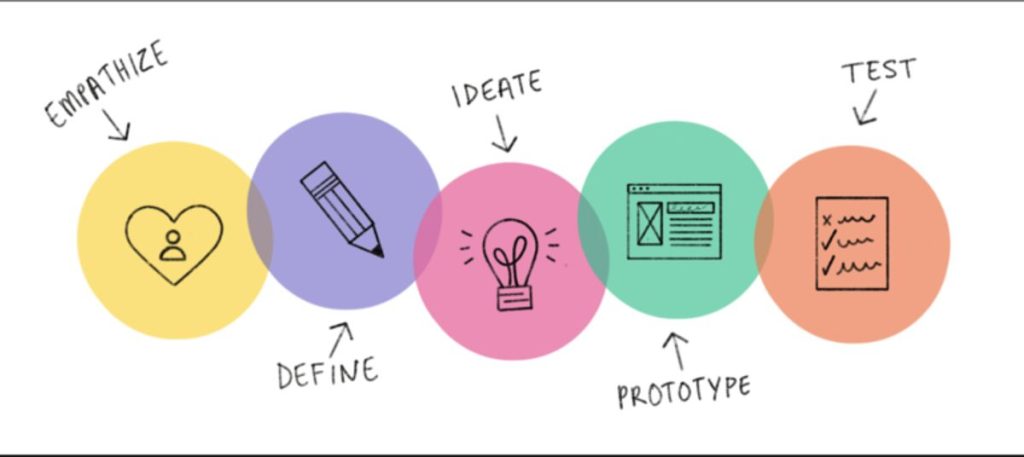Separation anxiety in dogs is a common issue that many pet owners face. It can lead to distressing behaviors such as excessive barking, destructive chewing, and even depression in dogs. Understanding the root causes and implementing effective solutions can greatly improve the quality of life for both you and your furry friend. This article explores various strategies and techniques to help alleviate separation anxiety in dogs, ensuring they feel safe and secure even when left alone.
Key Takeaways
- Downplaying exits and returns can signal to your dog that there is nothing to worry about while you are gone.
- Exercise, training, and mental stimulation are crucial in helping to relieve stress and anxiety in dogs.
- Desensitization and counterconditioning are effective training techniques to reduce anxiety.
- Special toys and treats can provide comfort and distraction for dogs with separation anxiety.
- In severe cases, consulting a veterinarian for potential medication options may be necessary.
Understanding Separation Anxiety in Dogs
Separation anxiety is a condition in which a dog exhibits distress and behavior problems when separated from its person. Most dogs with separation anxiety want to remain close to their owners at all times. They may follow them from room to room, crave attention and physical contact, or not want to spend time outdoors without them. This behavior can be misinterpreted as “love” by many owners but it is a sign of a lack of confidence and foundation for mental stability in dogs.
Creating a Calm Environment
Downplaying Exits and Returns
When you leave or return home, try to keep these moments low-key. Avoid making a big fuss over your dog during these times. This helps your dog understand that your comings and goings are not a big deal. Instead, wait until your dog is calm before giving them attention or treats.
Using Calming Aids
Consider using calming aids to help your dog relax. These can include over-the-counter natural calming supplements, pheromone diffusers, or even a piece of your recently worn clothing that smells like you. These aids can provide comfort and reduce anxiety levels in your dog.
Creating a positive environment for you and your pet is crucial. Never punish your dog for anything they do when you’re not there. Respond to situations calmly, as your dog can sense your emotions, which can make things harder for both of you.
Exercise and Mental Stimulation
Exercise and mental stimulation are crucial for managing your dog's separation anxiety. A well-exercised dog is generally happier and less likely to act out when left alone. Daily exercise routines can include walks, runs, or even agility training. The key is to find activities that your dog enjoys and that will tire them out both physically and mentally.
Daily Exercise Routines
Regular exercise is essential for your dog's well-being. Aim for at least 30 minutes to an hour of physical activity each day. This can be broken up into multiple sessions if needed. Activities like fetch, tug-of-war, or even a simple walk around the neighborhood can make a big difference. If you have a high-energy breed, consider more intense activities like running or agility training.
Interactive Toys and Puzzles
Interactive toys and puzzles are excellent for providing mental stimulation. These toys challenge your dog to think and solve problems, which can be just as tiring as physical exercise. Puzzle games that make your dog work for a snack are particularly effective. You can also try hiding treats around the house for your dog to find. This not only keeps them busy but also taps into their natural hunting instincts.
Providing lots of physical and mental stimulation is a vital part of treating many behavior problems, especially those involving anxiety. Exercising your dog’s mind and body can greatly enrich his life, decrease stress and provide appropriate outlets for normal dog behaviors.
Training Techniques to Reduce Anxiety
Desensitization Training
Desensitization training involves gradually exposing your dog to the situation that causes anxiety, but in a controlled and low-intensity manner. The key is to ensure your dog remains calm throughout the process. For example, you might start by leaving the room for just a few seconds and then gradually increase the time as your dog becomes more comfortable.
Counterconditioning Methods
Counterconditioning works by associating the anxiety-provoking situation with something positive, like treats or playtime. The idea is that your dog will start to associate your departure with good things, reducing their anxiety over time. Consistency is crucial here, so make sure to reward your dog every time you practice this technique.
Remember, patience and consistency are essential when using these training techniques. Your dog needs time to adjust and feel secure.
Using Special Toys and Treats
Choosing the Right Toys
Always make sure that your dog has exciting things to do when you're not with them. You can give your dog a long-lasting chew such as a stuffed ‘kong' toy, a meat-flavoured chew or a treat ball when you plan to go out. Remember to take any food treats out of your pet's daily food allowance to avoid overfeeding. If your dog doesn't use it when you're away, this may be a sign that your dog is worried when you're out.
Treats That Help Calm Anxiety
You can feed your dog all of his daily meals in special toys. For example, you can give your dog a KONG or two stuffed with his breakfast and some tasty treats every morning before going to work. Keep in mind, though, that this approach will only work for mild cases of separation anxiety because highly anxious dogs usually won’t eat when their guardians aren’t home.
Providing food puzzle toys and chew items encourages chewing and licking, which have been shown to have a calming effect on dogs. Be sure to provide them whenever you leave the house.
Establishing a Consistent Routine
Creating a consistent routine for your dog can significantly reduce their separation anxiety. Dogs are creatures of habit and thrive on predictability. Making your dog’s day more predictable helps calm an anxious pet.
When to Seek Professional Help
Consulting a Veterinarian
If your dog’s signs are severe or you are worried they might hurt themselves trying to escape, see your veterinarian right away. Some medical issues come with symptoms that can be easily confused with signs of separation anxiety in dogs, so it is best to get your veterinarian involved early to make sure you are treating the right thing.
Working with a Dog Trainer
For help designing and carrying out a desensitization and counterconditioning plan, consult a Certified Applied Animal Behaviorist (CAAB or ACAAB) or a board-certified veterinary behaviorist (Dip ACVB). If you can’t find a behaviorist, you can seek help from a Certified Professional Dog Trainer (CPDT), but be sure that the trainer is qualified to help.
Bold: If our advice hasn't eased the separation-related behaviour, talk to a vet who knows you and your dog. They should then refer you to a clinical animal behaviourist. They'll help you identify the underlying cause of the problem and develop a personalised treatment plan.
Medication Options for Severe Cases
When dealing with severe cases of separation anxiety in dogs, medication can be a game-changer. Anti-anxiety medication can help a dog tolerate some level of isolation without experiencing anxiety, making treatment progress more quickly. In some instances, long-term medication might be necessary.
Types of Medications
There are several types of medications that can be prescribed for dogs with severe separation anxiety:
- SSRIs (Selective Serotonin Reuptake Inhibitors): These are commonly used to treat anxiety and depression in both humans and dogs.
- Benzodiazepines: These are used for short-term relief of anxiety and can be particularly useful in event-specific situations.
- Tricyclic Antidepressants (TCAs): These can also be effective in managing anxiety symptoms.
Your veterinarian may prescribe a customized, compounded medication. These medications are mixed by trained, licensed compounding pharmacists and often come in dosage forms designed to make giving or applying the medication easier and more accurate.
Potential Side Effects
While medications can be very helpful, they can also come with side effects. Some common side effects include:
- Drowsiness
- Increased appetite
- Gastrointestinal issues
It's important to monitor your dog closely and consult your veterinarian if you notice any adverse reactions. In some cases, the medication may need to be adjusted or changed.
The use of medications can be very helpful, especially for severe cases of separation anxiety. Some dogs are so distraught by any separation from their pet parents that treatment can’t be implemented without the help of medication.
Combining medication with behavior modification techniques like positive reinforcement can yield the best results. Always consult your veterinarian to determine the best course of action for your furry friend.
Monitoring Progress and Adjusting Strategies
Keeping a Behavior Journal
One of the most effective ways to monitor your dog's progress is by keeping a behavior journal. Documenting daily observations can help you identify patterns and triggers for your dog's anxiety. Note down specific behaviors, the time they occur, and any potential triggers. This will provide valuable insights into what works and what doesn't.
Adjusting Techniques as Needed
It's important to be flexible and adjust your strategies based on your dog's progress. If you notice that certain techniques are not effective, don't hesitate to try something new. For instance, if your dog is still showing signs of anxiety after a few weeks of desensitization training, you might want to incorporate counterconditioning methods or consult a professional for additional guidance.
Regularly reviewing your dog's behavior and making necessary adjustments can significantly improve the effectiveness of your anxiety-reducing strategies. Remember, every dog is unique, and what works for one may not work for another.
Building a Stronger Bond with Your Dog
Building a strong bond with your dog is essential for preventing behavioral problems and ensuring a happy, healthy relationship. Here are some effective ways to enhance your connection with your furry friend.
Conclusion
Dealing with separation anxiety in dogs can be challenging, but with the right approach, it is entirely manageable. By understanding the root causes and implementing effective strategies such as counterconditioning, desensitization, and providing mental stimulation, you can help your furry friend feel more secure when left alone. Remember, patience and consistency are key. With time and effort, you can reduce your dog's anxiety and create a more harmonious environment for both of you. So, take a deep breath, stay optimistic, and know that you're not alone in this journey.
Frequently Asked Questions
What are the common symptoms of separation anxiety in dogs?
Common symptoms include destructive behavior, excessive barking or howling, shaking, shivering, and attention-seeking behaviors.
How can I downplay exits and returns to help my dog's anxiety?
Keep your greetings and goodbyes calm and low-key. This helps signal to your dog that there is nothing to worry about when you leave or return home.
Why do some dogs develop separation anxiety?
Separation anxiety can develop due to various factors including a change in schedule, moving to a new home, or the loss of a family member.
What is counterconditioning and how does it help?
Counterconditioning is a process that changes a dog's fearful or anxious reaction to a pleasant one by associating the feared situation with something positive, like treats or play.
What kind of toys can help reduce my dog's separation anxiety?
Interactive toys and puzzles can keep your dog mentally stimulated and distracted, which can help reduce anxiety when they are alone.
When should I seek professional help for my dog's separation anxiety?
If your dog's anxiety is severe or not improving with basic interventions, it may be time to consult a veterinarian or a professional dog trainer.
Are there medications available for treating severe separation anxiety in dogs?
Yes, there are medications that can help manage severe cases of separation anxiety. Consult your veterinarian for advice on the best options for your dog.
How can I monitor my dog's progress in overcoming separation anxiety?
Keep a behavior journal to track your dog's symptoms and any changes over time. Adjust your strategies as needed based on what you observe.




